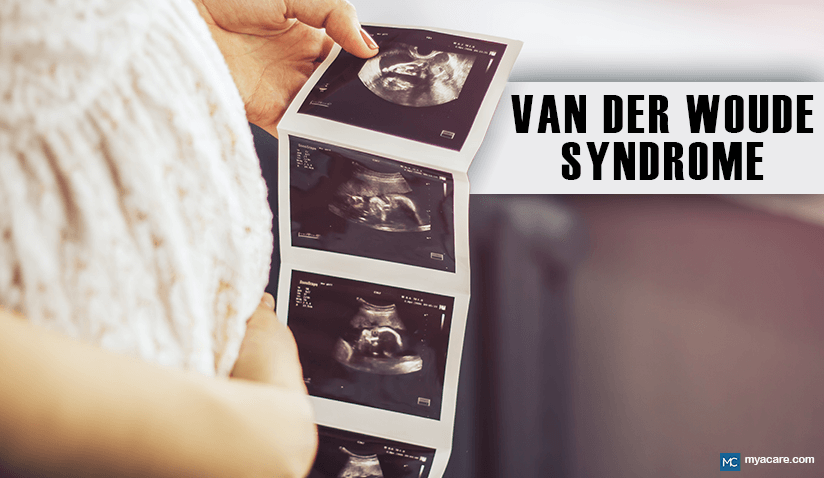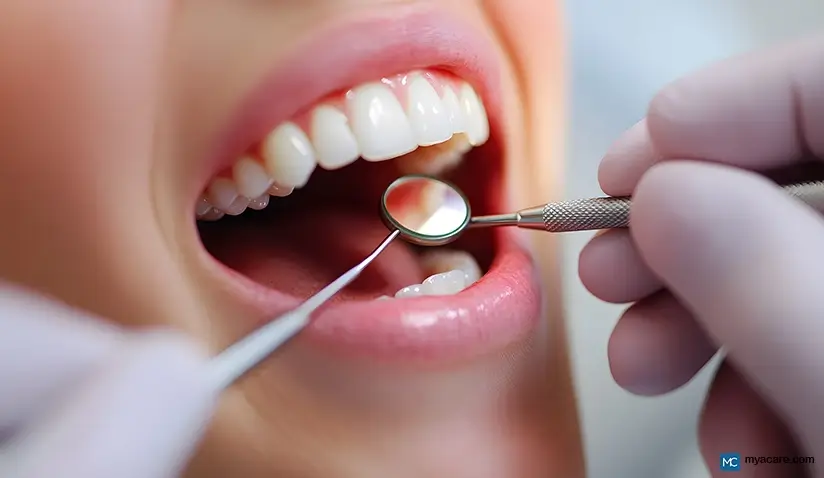Understanding Van Der Woude Syndrome: Genetics, Symptoms, and Diagnosis

Medically Reviewed by Dr. Sony Sherpa, (MBBS)
Van der Woude Syndrome (VWS) is a rare genetic disorder that primarily affects the development of the orofacial region. Although it is relatively uncommon, with an estimated prevalence of approximately 1 in 35,000 to 1 in 100,000 live births, its impact on affected individuals can be significant, especially in terms of speech, feeding, and dental development. However, not all individuals with VWS present with all these features, and the severity of symptoms can vary greatly.
What is Van der Woude Syndrome (VWS)?
Sometimes referred to as lip pit syndrome or orofacial clefting syndrome due to its hallmark features, VWS is most commonly characterized by a triad of symptoms: cleft lip, cleft palate, and lip pits. VWS is an autosomal dominant condition, which means that if a person inherits even one copy of the gene mutation, they will likely develop the syndrome. As a result, any offspring has a 50% risk of inheriting the gene.
Causes of Van der Woude Syndrome
The primary cause of VWS is mutations in the IRF6 gene (interferon regulatory factor 6), which plays a key role in the development of the orofacial region. Mutations in this gene can result in defective transcription factors, leading to improper development of the facial structures.
The IRF6 gene frequently exhibits missense mutations. This type of mutation involves a single change in the DNA sequence, specifically a nucleotide, that results in one amino acid being replaced by another. This substitution can disrupt the normal functionality of the IRF6 protein. These mutations can significantly affect embryonic development, particularly in the formation of the lip and palate.
About 5%–10% of Van der Woude Syndrome (VWS) cases are linked to mutations in the GRHL3 gene. GRHL3 is vital for forming the oral periderm, which is essential for proper palatal fusion during development. Mutations can disrupt this process, causing features like cleft lip/palate and lip pits.
Symptoms and Characteristics
One of the most distinctive features of Van der Woude Syndrome is the variability in how the condition manifests among different individuals. This is known as variable expressivity, meaning that two individuals with the same genetic mutation may exhibit different combinations and severities of symptoms. Some individuals may present with all hallmark features, while others may only display one or two.
Key Features of Van der Woude Syndrome
Lip Pits:
- Location: Lip pits are typically found on the lower lip, although they can sometimes occur on the upper lip as well.
- Appearance: These pits are small indentations or depressions, often appearing as small holes or divots in the skin. They may secrete saliva, which can sometimes lead to drooling.
- Diagnostic Significance: Lip pits are considered a key diagnostic feature of VWS. Their presence, in conjunction with clefting anomalies, can help confirm the diagnosis.
Cleft Lip and/or Cleft Palate:
- Cleft lips and palates can vary in severity, ranging from small, isolated notches in the upper lip to more severe clefts that extend through the lip and palate. Not all individuals with VWS will have both a cleft lip and palate, but many will have at least one of these features.
- Cleft Lip: This is a congenital split or opening in the upper lip. Depending on whether one or both lips are involved, cleft lip is classified as unilateral or bilateral.
- Cleft Palate: This refers to a gap or opening in the roof of the mouth that can vary in extent, from a small notch in the soft palate to a larger gap extending through the hard palate.
Other Possible Features:
- Hypodontia: The condition may cause missing teeth, especially in the lower jaw.
- Abnormal Salivary Glands: Some individuals may experience issues with their salivary glands.
- Skin Abnormalities: Skin folds covering the big toes, webs of skin on the back of the knees or between fingers (syndactyly), and a narrow arched palate are also observed.
- Congenital Heart Defects: Some individuals may have congenital heart disease, which can present as heart murmurs.
- Cerebral Abnormalities: Although less common, some individuals may have abnormalities in the brain, including developmental delays.
- Other Anomalies: These include a bifid uvula (split uvula), ankyloglossia (tongue-tie), and other minor malformations.
Potential Complications
VWS can lead to several complications due to the nature of the condition and its effects on facial and oral development:
- Feeding Difficulties in Infants: Infants with cleft lips and palates often experience difficulty feeding due to the inability to form a proper seal during breastfeeding or bottle-feeding. Special feeding techniques and equipment may be necessary.
- Speech Problems: Speech difficulties, particularly articulation and resonance disorders, can arise due to the cleft palate and lip, which affect normal speech development. Early intervention through speech therapy is essential for improving speech outcomes.
- Dental Problems: Missing teeth, malocclusion (misalignment of teeth), and other dental issues are common in individuals with VWS. Regular dental care and orthodontic treatment are crucial for managing these issues.
- Hearing Loss: The risk of ear infections and hearing loss is higher in individuals with cleft palates. Eustachian tube dysfunction, caused by palate abnormalities, can result in middle ear fluid build-up and even hearing loss.
Diagnosis
Diagnosing Van der Woude Syndrome involves several steps:
- Clinical Examination: The presence of characteristic features such as lip pits and/or clefts is the first step in diagnosis.
- Family History: Since VWS follows an autosomal dominant inheritance pattern, a detailed family history can help identify other affected individuals.
- Genetic Testing: IRF6 gene mutation testing confirms the diagnosis. The testing typically involves DNA analysis to identify mutations.
Importance of Early Diagnosis
Early diagnosis of VWS is critical for several reasons:
- Timely Intervention: Early treatment for clefts and lip pits can help manage feeding, speech, and dental issues.
- Genetic Counseling: Genetic counseling is essential for affected individuals and their families to understand the inheritance pattern, recurrence risks, and family planning options.
- Prenatal Diagnosis: Prenatal testing, such as chorionic villus sampling (CVS) or genetic amniocentesis, can be performed to detect the condition in a fetus if there is a known family history of VWS.
Differential Diagnosis
Several conditions may mimic VWS, making it important to distinguish between them. These include:
- Popliteal Pterygium Syndrome: This condition can cause cleft lip and palate but is associated with additional features like webbing of the knees. These can also include genital anomalies, such as underdeveloped and small labia majora in females or undescended testicles in males.
- Kabuki Syndrome: This syndrome may present with clefts and other facial features similar to VWS, but includes other systemic features such as skeletal abnormalities.
- Orofacial Digital Syndrome Type I: A genetic disorder that affects the orofacial region, similar to VWS, but with more severe anomalies.
- Hirschsprung Disease: This condition can cause bowel obstructions and may sometimes be associated with cleft palate.
- Isolated Cleft Lip: Isolated cleft lip may occur without the other features of VWS. Folic acid supplementation can decrease the isolated cleft lip risk associated with neural tube defects.
Treatment and Management
Managing VWS involves a multidisciplinary team encompassing surgeons, orthodontists, speech therapists, audiologists, and other specialists for comprehensive cleft lip and palate repair. Their coordinated efforts ensure optimal functional and aesthetic outcomes by addressing surgical needs, dental alignment, speech development, hearing, and the overall well-being of the patient from infancy through adulthood.
- Cleft Lip/Palate Repair: Surgical repair of the cleft lip and/or palate is usually done early in life. The timing and approach vary based on the severity of the cleft, with multiple surgeries often needed as the child grows.
- Lip Pit Management: Lip pits may not always require treatment, but surgical removal can be considered for cosmetic or functional reasons.
- Dental Care: Regular dental checkups, as well as orthodontic treatment, are necessary to address missing teeth, malocclusion, and other dental issues.
- Speech Therapy: Early speech therapy helps improve articulation and resonance, which can be affected by cleft palate.
- Genetic Counseling: This helps families understand the inheritance pattern and explore family planning choices.
- Feeding Assistance: Specialized feeding bottles and techniques are used in infants to ensure adequate nutrition and reduce feeding difficulties.
Research and the Future
Studies are actively researching the IRF6 gene to better understand VWS and facial development. Ongoing improvements in repair techniques are resulting in superior functional and cosmetic outcomes for those with cleft lip and palate.
Conclusion
Van der Woude Syndrome is an intricate and complex genetic disorder with a range of features, including cleft lip, cleft palate, and lip pits. Though it can pose challenges in feeding, speech, and dental development, early diagnosis and a collaborative, multidisciplinary approach can effectively manage these issues, leading to improved outcomes. Ongoing research is set to enhance the understanding of its genetic causes and pave the way for more effective treatment strategies.
To search for the best healthcare providers for Medical Genetics in Germany, India, Saudi Arabia, Singapore, Slovakia, Spain, Thailand, The UAE, The UK and The USA, please use our free Mya Care search engine.
To search for the best Doctors and Healthcare Providers worldwide, please use the Mya Care search engine.
The Mya Care Editorial Team comprises medical doctors and qualified professionals with a background in healthcare, dedicated to delivering trustworthy, evidence-based health content.
Our team draws on authoritative sources, including systematic reviews published in top-tier medical journals, the latest academic and professional books by renowned experts, and official guidelines from authoritative global health organizations. This rigorous process ensures every article reflects current medical standards and is regularly updated to include the latest healthcare insights.

Dr. Sony Sherpa completed her MBBS at Guangzhou Medical University, China. She is a resident doctor, researcher, and medical writer who believes in the importance of accessible, quality healthcare for everyone. Her work in the healthcare field is focused on improving the well-being of individuals and communities, ensuring they receive the necessary care and support for a healthy and fulfilling life.
Sources:
Featured Blogs



